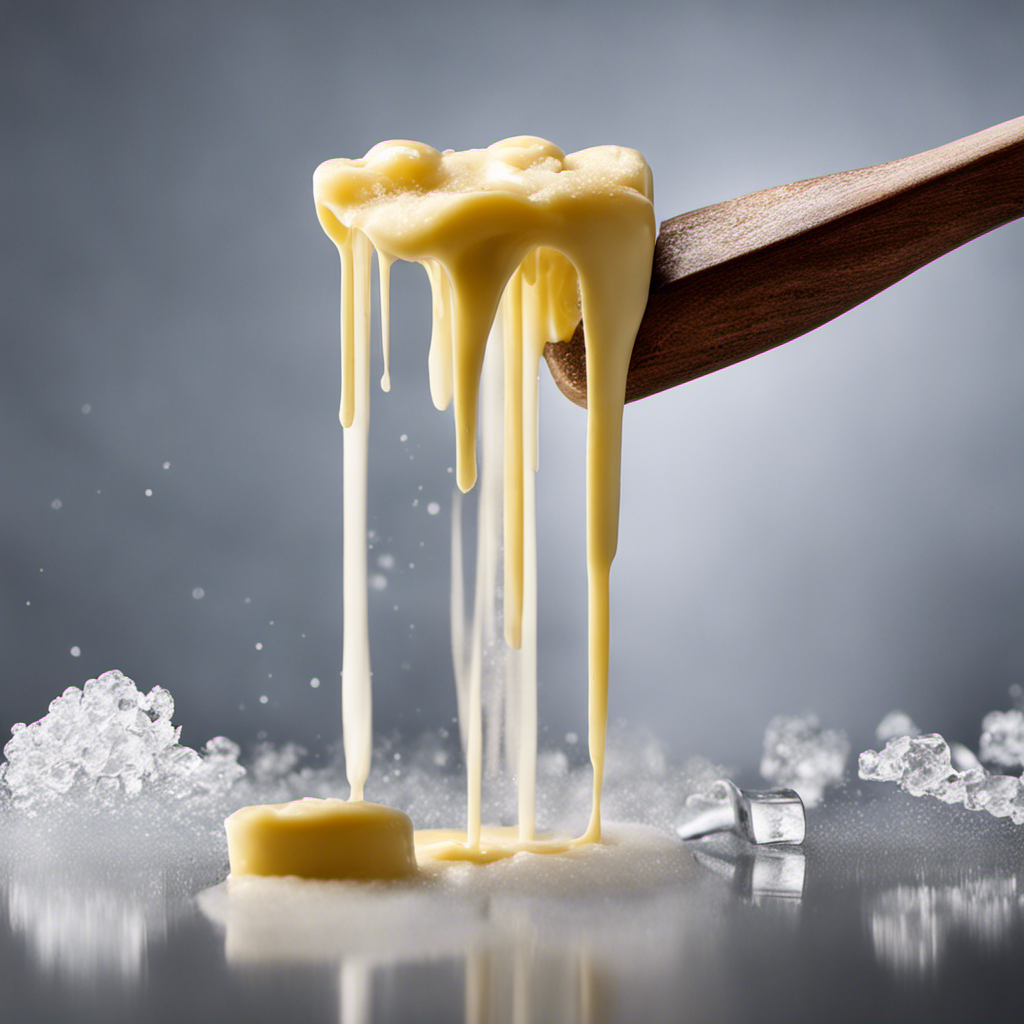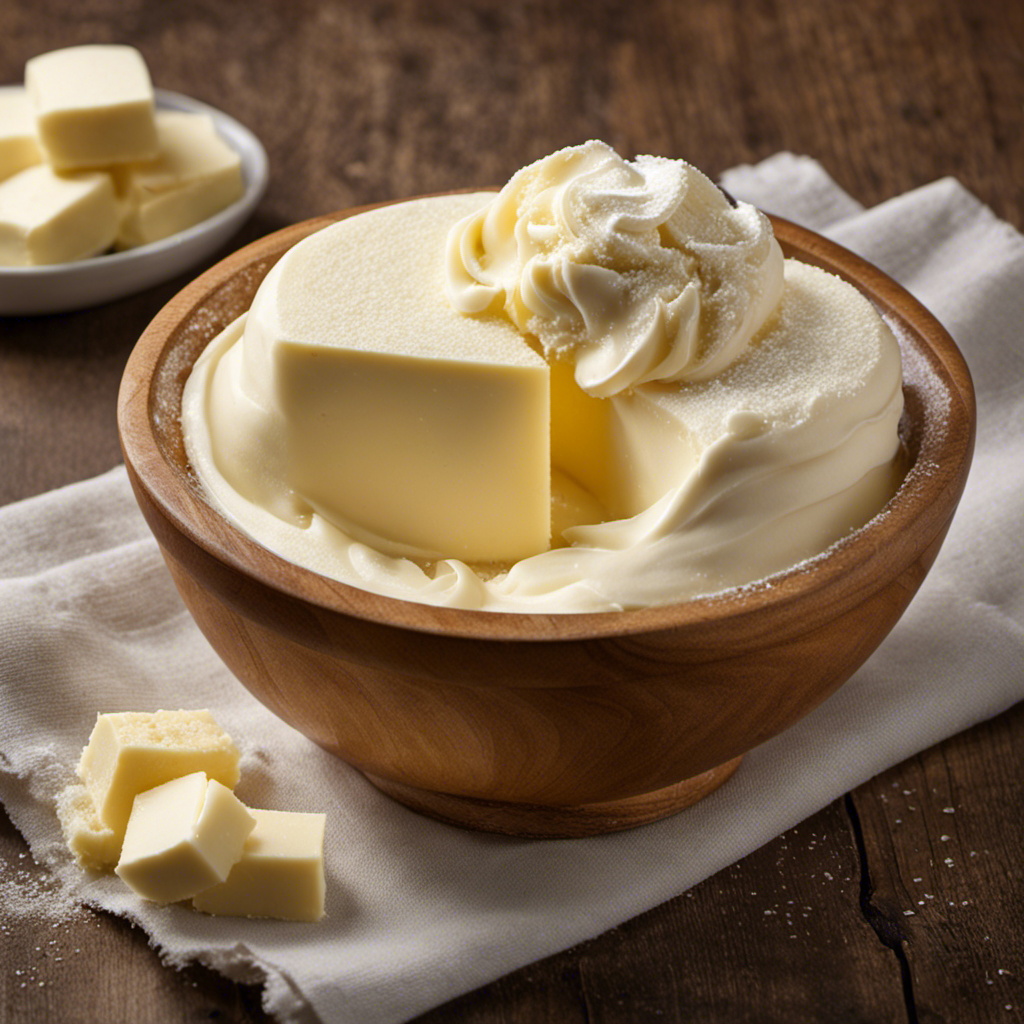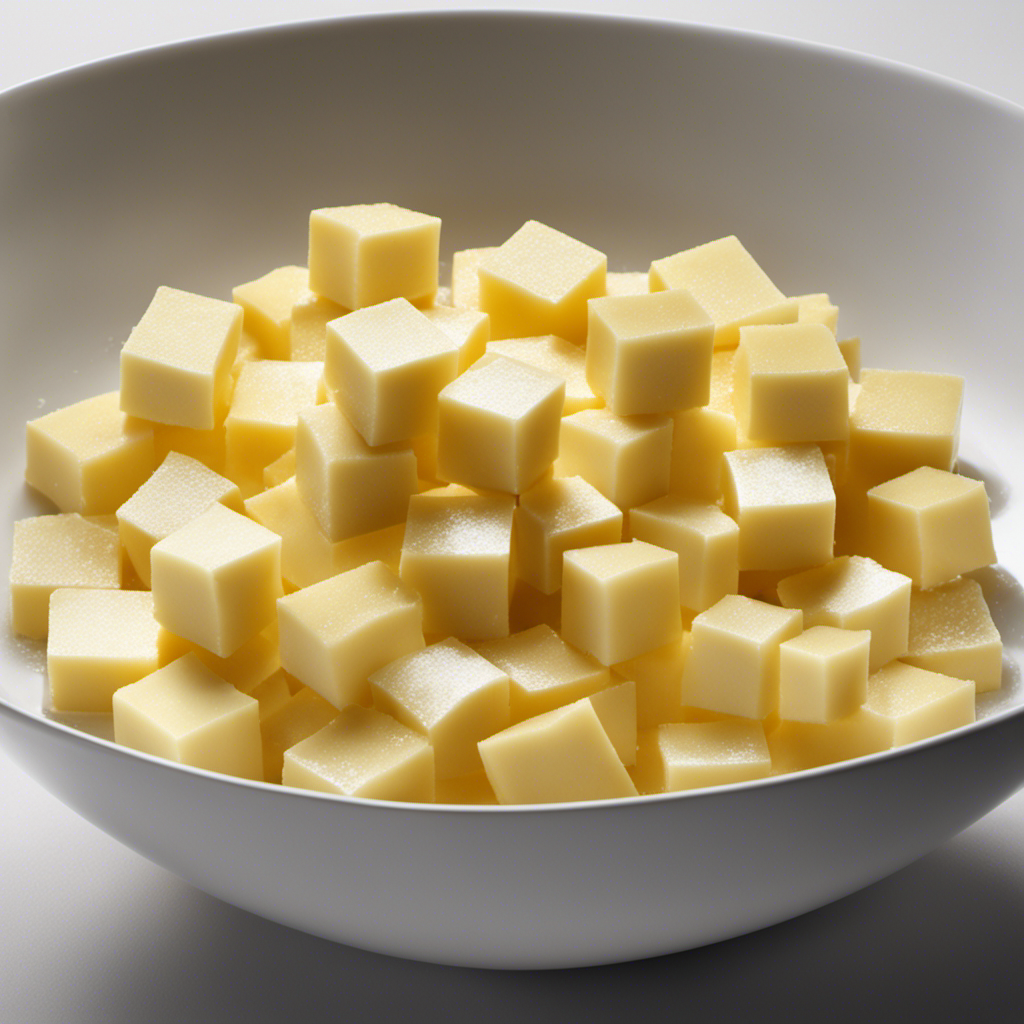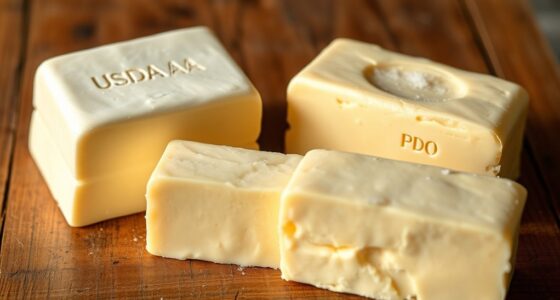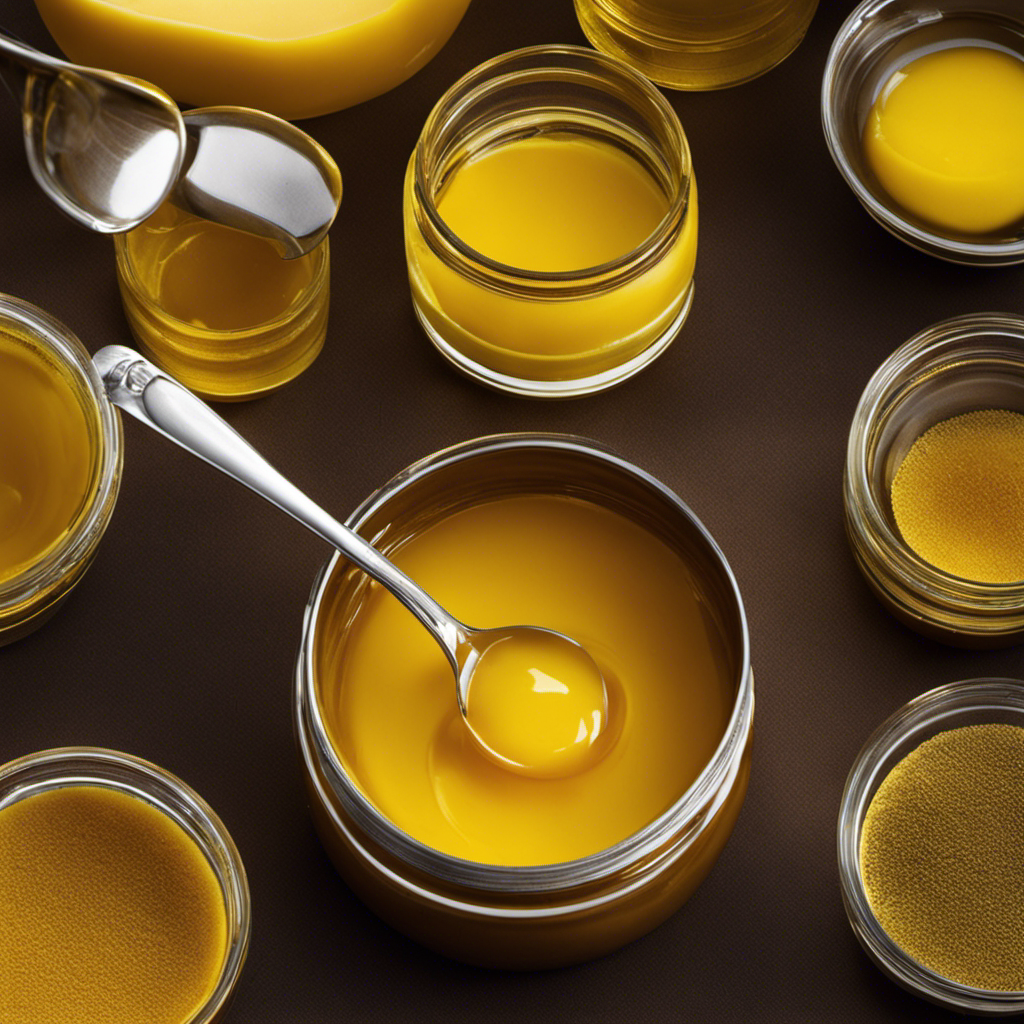As a butter enthusiast, I have faced challenges with hard butter sticks straight from the fridge. But fret not! I have some clever tricks to soften butter for easy spreading.
Like a warm hug on a chilly day, these techniques will melt away the frustration and have your butter ready to spread in no time.
From the refrigerator to the microwave, I’ll guide you through the best ways to defrost butter and avoid any common pitfalls along the way.
Let’s get melting!
Key Takeaways
- Opt for unsalted butter when freezing to avoid altering the taste of recipes.
- Select butter with a high fat content for better texture and flavor after defrosting.
- Thaw frozen butter naturally by removing it from the refrigerator.
- Use the microwave method to quickly soften butter at room temperature.
Choosing the Right Butter for Defrosting
To choose the right butter for defrosting, you’ll want to make sure it’s unsalted and wrapped in parchment paper. Salted butter can alter the taste of your recipes, so it’s best to opt for unsalted butter when freezing.
Storing butter in the freezer is a great way to prolong its shelf life and have it ready whenever you need it. When selecting butter for freezing, look for a brand that has a high fat content, as this will result in a better texture and flavor after defrosting.
Additionally, ensure that the butter is tightly wrapped in parchment paper to prevent freezer burn and maintain its freshness.
Following these guidelines will ensure that you have the perfect butter for all your baking and cooking needs.
The Best Storage Methods for Butter
One of the best ways to store butter is in an airtight container in the refrigerator. Proper storage ensures that the butter stays fresh and maintains its flavor for longer periods.
When choosing quality butter, it’s essential to consider factors such as freshness, ingredients, and production methods. Look for butter made from high-quality cream, preferably from grass-fed cows, as it tends to have a richer flavor.
Now, let’s talk about different types of butter storage containers. There are various options available, including glass jars, ceramic butter dishes, and plastic containers.
Glass jars are great because they are transparent, allowing you to easily see the amount of butter left. Ceramic butter dishes are elegant and usually come with a lid to keep the butter protected. Plastic containers are lightweight and convenient for on-the-go use.
Whichever container you choose, make sure it is airtight to prevent the butter from absorbing odors and flavors from other foods in the refrigerator.
Defrosting Butter in the Refrigerator
When you’re ready to use it, simply take your frozen butter out of the refrigerator and let it thaw naturally. This is the most common and recommended method for defrosting butter.
However, if you’re in a hurry and need softened butter quickly, there are a few other options to consider.
One method is to defrost the butter in water. Fill a bowl with lukewarm water and place the wrapped butter in it. The water helps to speed up the thawing process, but be careful not to use hot water as it can melt the butter.
Another option is to use a butter dish. Cut the frozen butter into smaller chunks and place them in a butter dish. Leave the dish at room temperature for about 30 minutes to an hour, or until the butter is soft and spreadable.
These methods provide a quick alternative to defrosting butter at room temperature.
In the next section, I will discuss some other quick methods for defrosting butter at room temperature.
Quick Methods for Defrosting Butter at Room Temperature
If you’re in a hurry and need soft butter quickly, you can try using the microwave method to thaw it at room temperature. Softening butter is essential for baking and cooking, as it allows for easier incorporation into recipes.
To soften butter at room temperature, place the desired amount of butter on a microwave-safe plate and microwave it for 5-second intervals on low power. Check the butter after each interval to ensure it doesn’t melt. The microwave method works by gently raising the butter’s temperature, making it soft and spreadable in no time. However, be cautious not to overheat the butter, as it can lead to a melted mess.
Once the butter is soft, you can seamlessly transition into the subsequent section about using the microwave to defrost butter.
Using the Microwave to Defrost Butter
As someone who frequently uses the microwave to defrost butter, it is important to take certain safety precautions.
One should always ensure that the butter is placed in a microwave-safe container and that it is not wrapped in any kind of foil or metallic material.
Additionally, it is crucial to use the appropriate defrosting time to ensure that the butter thaws evenly and does not become overly soft or melted.
Microwave Safety Precautions
To ensure your safety, always use microwave-safe containers when defrosting butter. This is especially important because microwaves can heat food unevenly, leading to potential safety hazards.
When using the microwave to defrost butter, it is crucial to consider the wattage of your microwave. Higher wattage microwaves will defrost butter faster, so you need to adjust the time accordingly.
Additionally, it is important to avoid defrosting other ingredients along with the butter, as they may have different defrosting times and can affect the overall cooking process.
By using microwave-safe containers and being mindful of the wattage and ingredients, you can ensure a safe and efficient butter defrosting process.
Now, let’s move on to the optimal defrosting time for butter.
Optimal Defrosting Time
For the best results, you should adjust the time based on the wattage of your microwave when defrosting other ingredients alongside your butter. Here are some tips to help you achieve the optimal defrosting temperature for your butter:
- Start by placing your butter in a microwave-safe bowl.
- Fill another larger bowl with warm water.
- Carefully place the bowl of butter into the warm water, making sure it is submerged.
- Set your microwave to the defrost setting and adjust the time based on the wattage of your microwave.
Defrosting butter in water is a great method because it allows for a gradual thawing process, ensuring that the butter thaws evenly without becoming partially melted. The warm water helps to speed up the thawing process while still maintaining the integrity of the butter.
Remember to check the butter periodically and stir it to ensure even defrosting.
Avoiding Common Mistakes When Defrosting Butter
One common mistake when defrosting butter is microwaving it for too long. This can lead to melted and unevenly softened butter, which can affect the texture and consistency of your baked goods.
It’s important to use unsalted butter for baking because it allows you to control the amount of salt in your recipe.
When you’re in a hurry to defrost butter, there are a few tips you can follow. First, you can grate the frozen butter using a cheese grater to speed up the process.
Another option is to place the butter in a resealable plastic bag and submerge it in warm water for a few minutes.
Lastly, you can use your microwave’s defrost setting, but be sure to check the butter frequently to avoid overheating.
Frequently Asked Questions
Can I Use Margarine Instead of Butter for Defrosting?
Yes, you can use margarine instead of butter for defrosting. However, keep in mind that margarine has a different texture and taste, which may affect the outcome of your baked goods. Make sure to properly store butter in the freezer to avoid the need to defrost it.
How Long Can I Keep Butter in the Freezer Before It Becomes Inedible?
Butter can be kept in the freezer for up to 6 months before it becomes inedible. To defrost at room temperature, it takes about 1-2 hours. Using a microwave is also an option for quicker defrosting.
Can I Refreeze Butter After It Has Been Defrosted?
Yes, you can refreeze butter after it’s been defrosted, but it may affect the texture. If you’re concerned, consider using the defrosted butter in alternative ways like baking or cooking.
Is It Safe to Use Butter That Has Been Defrosted in the Refrigerator for More Than a Week?
Using defrosted butter that has been stored in the refrigerator for over a week may not be safe. It is important to follow proper defrosting methods and store defrosted butter safely to avoid any potential health risks.
Can I Speed up the Defrosting Process by Placing Butter in Warm Water?
Placing butter in warm water can speed up the defrosting process, but it’s not the recommended method. It can cause the butter to melt unevenly and affect its texture. There are other alternative defrosting methods that are safer and more effective.
Conclusion
In conclusion, defrosting butter is a simple task that can greatly enhance your cooking experience. By choosing the right storage method and using proper techniques, you can ensure that your butter is ready to use whenever you need it.
Just like a well-oiled machine, defrosting butter smoothly blends all the ingredients of a dish together, creating a symphony of flavors.
So next time you find yourself in need of softened butter, remember these tips and enjoy the seamless process of defrosting.
